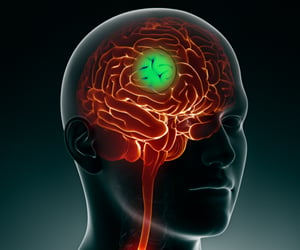Research shows that motor signals in the brain actually sharpen sound perception, and this effect is increased when we move in rhythm with the sound.

TOP INSIGHT
Whether it is dancing or just tapping one foot to the beat, we all experience how auditory signals like music can induce movement.
Working in the lab of MNI researcher Sylvain Baillet, he recruited 21 participants who listened to complex tone sequences and had to indicate whether a target melody was on average higher or lower-pitched compared to a reference. The researchers also played an intertwined distracting melody to measure the participants' ability to focus on the target melody.
The exercise was done in two stages, one in which the participants were completely still, and another in which they tapped on a touchpad in rhythm with the target melody. The participants performed this task while their brain oscillations, a form of neural signaling brain regions use to communicate with each other, were recorded with magnetoencephalography (MEG).
MEG millisecond imaging revealed that bursts of fast neural oscillations coming from the left sensorimotor cortex were directed at the auditory regions of the brain. These oscillations occurred in anticipation of the occurrence of the next tone of interest. This finding revealed that the motor system can predict in advance when a sound will occur and send this information to auditory regions so they can prepare to interpret the sound.
One striking aspect of this discovery is that timed brain motor signaling anticipated the incoming tones of the target melody, even when participants remained completely still. Hand tapping to the beat of interest further improved performance, confirming the important role of motor activity in the accuracy of auditory perception.
A better understanding of the link between movement and auditory processing could one day mean better therapies for people with hearing or speech comprehension problems.
Source-Eurekalert
 MEDINDIA
MEDINDIA




 Email
Email








